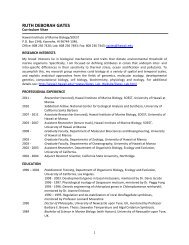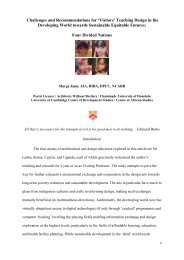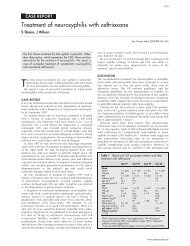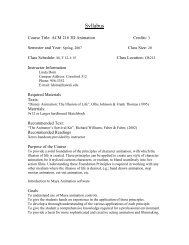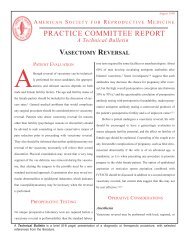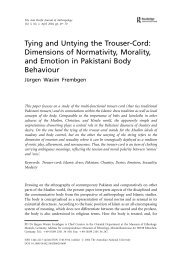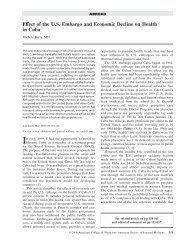EFFECT OF REDUCED FORMS ON ESL LEARNERS' INPUT ...
EFFECT OF REDUCED FORMS ON ESL LEARNERS' INPUT ...
EFFECT OF REDUCED FORMS ON ESL LEARNERS' INPUT ...
You also want an ePaper? Increase the reach of your titles
YUMPU automatically turns print PDFs into web optimized ePapers that Google loves.
Ito – Effect of Reduced Forms on Input-Intake Process 100<br />
“there would not be significant differences between presence and absence scores for the<br />
native speakers but that there would be for the <strong>ESL</strong> learners” (p. 117).<br />
Henrichsen’s finding is significant, and thus contributes to the understanding of the<br />
input-intake process in SLA; however, his study was limited in several ways. The<br />
present study further investigates the influence of reduced forms on the input-intake<br />
process, modifying two aspects of Henrichsen’s study: (a) sentence complexity in the<br />
test, and (b) differences in reduced form type. Reexamining the influence of reduced<br />
forms on listening comprehension, and consequently on the input-intake process, with<br />
these changes provides further understanding, not only of whether reduced forms<br />
influence listening comprehension, but also of which type of reduced form influences<br />
learners’ listening comprehension more than others.<br />
Reduced Forms<br />
The term reduced forms refers to a phenomenon commonly observed in the informal<br />
speech of native speakers. Celce-Murcia, Brinton, and Goodwin (1996) explain that<br />
“these forms involve unstressed vowels, omitted sounds, and other alternations of the full<br />
form, such as assimilation, contraction, and blending” (p. 230). One type of reduced<br />
form is called neutralization of vowels, which in most cases results in a schwa sound<br />
(Pennington, 1996).<br />
The distinction between content words and function words underlies the concept of<br />
reduced forms (Celce-Murcia et al., 1996). Content words which carry information tend<br />
to receive stress, while function words which “signify grammatical relationships” tend to<br />
be unstressed, and consequently reduced (Celce-Murcia et al., 1996, p. 153). Function<br />
words include articles, auxiliary verbs, personal pronouns, possessive adjectives,<br />
demonstrative adjectives, prepositions, and conjunctions (p. 154). For example, in the<br />
sentence I want him to study another language, the sounds of him are reduced;<br />
accordingly, instead of /hIm/, him is pronounced as /Im/ or /schwa + m/.<br />
The integrative grammar test (IGT) developed by Bowen (1976) incorporates reduced<br />
forms to measure the skill or ability of effectively using redundancy features in a<br />
language “to interpret a message that is distorted or obscured” (p. 30). Bowen claims<br />
that native speakers can easily and accurately understand reduced forms whereas<br />
nonnative speakers’ level of understanding varies. He examined whether the IGT scores<br />
reflected learners’ competence in the language, and concluded as follows:<br />
The IGT identifies and clearly separates native and non-native speakers of<br />
English, it reliably measures the competence of non-natives, and it correlates



